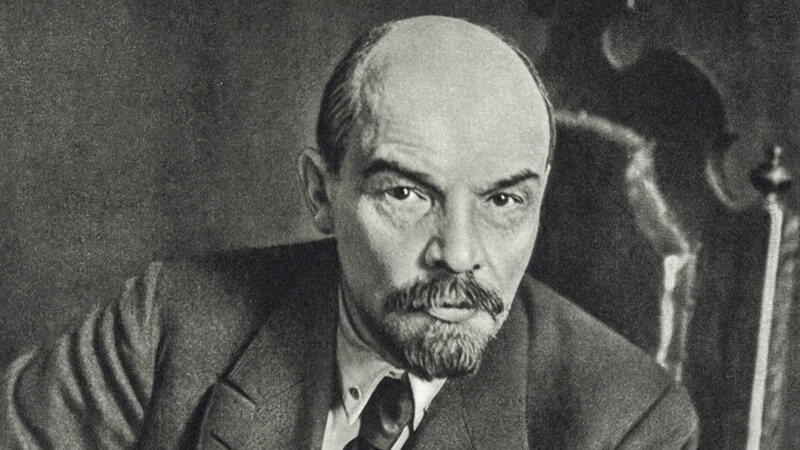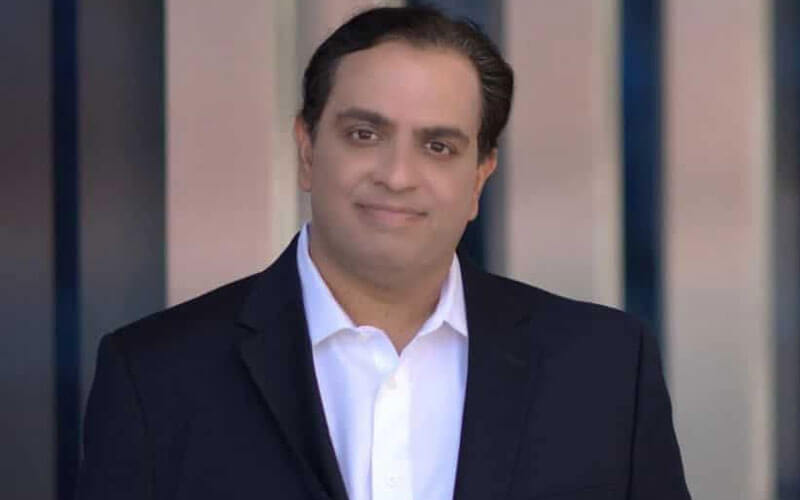Biography of Vladimir Lenin:- In the last decades of the nineteenth century, the abyss between Czar Alexander III, defender of Byzantine absolutism of his ancestors, and the cultivated class had been so aggravated that the struggle against Tsarism had become, among the educated Russians , a duty and an honor.
The political opposition and the revolutionary movement grew under the impulse of an “intelligentsia” that made acolytes in schools, in factories, newspapers and offices. Six years after the death of his predecessor, Alexander II, precisely on March 1, 1887, a group of young nihilists tried to end the life of the tsar.
Biography of Vladimir Lenin
- Born:- 22 April 1870, Ulyanovsk, Russia
- Died:- 21 January 1924, Gorki Leninskiye, Russia
- Resting place:- Lenin’s Mausoleum, Moscow, Russian Federation
- Parents:- Ilya Nikolayevich Ulyanov; Maria Alexandrovna Blank
- Spouse:- Nadezhda Krupskaya (m. 1898–1924)
- Movies:- Un’alba
The bombing failed and the terrorists were arrested. Among those sentenced to death was Alexander Ulyanov, the elder brother of the future Lenin. Upon hearing from the press that the group had been hanged in St. Petersburg, the boy received an indelible impression, which in time would become the strongest and most resolute opposition to Tsarism.
See Also: Biography of Gamal Abdel Nasser
But then, with the visionary lucidity, he summarized the situation in this sentence of condemning the methods of individual terrorism: “We will not go this way. It’s not the good one. ”
On the Road to Revolution
Vladimir IIich Ulianov, known as Lenin, was born on April 22, 1870, into a family typical of the Russian intelligentsia of the late nineteenth century. It was the fourth of the six children of Ilia Ulianov and Maria Alexandrovna Blank, who had settled the year before their birth in Simbirsk, a poor and backward city on the banks of the Volga.
The father, a first-rate inspector, shared the ideas of the revolutionary democrats of 1860 and had devoted himself to popular education, participating in the life of the Russian peasants confined in misery and ignorance.
The mother, of German descent, loved music and closely followed the school activities of her children. By his gentle and gentle character-he never imposed punishment or raises his voice-
The scholarly atmosphere of the house, where there was no lack of a good library, fostered the development of a sense of duty and discipline. Vladimir followed the example of his older brother, was a persistent and tenacious boy, a diligent and methodical student who obtained the best grades and excelled in chess.
At the age of fourteen he began to read “forbidden” books – Russia was then under the blackest repression and the reading of the great democrats was considered a crime.
When Alexander was hanged, the next year after the father died, the family was forced to move to the village of Kokuchkino, near Kazan.
At that time Vladimir left religion, for, as he would later say, the fate of his brother had “marked the destiny to follow.” In Kazan he began his studies of law in the imperial university, one of the focuses of greater opposition to the autocratic regime.
The same year of its entrance, 1887, Vladimir was stopped by participating in a manifestation of protest against the czar. When one of the policemen who were in custody asked him why he got mixed up in these revolts, why he banged his head against a wall, his answer was: “Yes, it’s a wall, true, but with a kick it will collapse.”
Expelled from university, he devoted himself entirely too revolutionary theories, began to study the works of Marx and Engels directly from the German, and read for the first time Capital, a decisive reading for his adherence to orthodox Marxism.
Already in his early writings he defended Marxism against the theories of the Narodniks, the Russian populists.
In May 1889 the family moved to the province of Samara, where, after many requests, Lenin obtained the authorization to examine himself in laws as a free student. Three years later he graduated with the highest grades and began to practice advocacy between artisans and poor peasants.
Already at that time, in the Marxist group of which he was a part, the Old Man was told by his vast erudition and his precociously bald Socratic front.
His Mongolian-cut face, broad cheekbones and Tartar eyes, narrow and ironic, the stout bearing and powerful neck made him look like a peasant. Lenin inscribed himself on the lists of instructors of working circles, called “democratic universities.”
He organized libraries, study programs and aid boxes to teach the methods of revolutionary struggle, to form workers’ cadres, propagandists and organizers of social-democratic circles, with a view to forming a future party.
For this he needed the support of the emigre Marxist groups, led by Georgi Plekhanov, and in April of 1895 traveled abroad, determined to study the labor movement of the West. He spent a few weeks in Switzerland, then visited Berlin and Paris, where he had contacts with Karl Liebknecht and Paul Lafargue.
Upon his return, he was arrested with his future rival Julij Martov by the Ochrana, the tsar’s secret police. In prison, Lenin quickly set to work.
He communicated with the outside world through his sister Ana and Nadezda Krupskaia, a student attached to the Marxist circle, who, in order to visit him in prison, had declared himself to be his girlfriend.
Later, in 1898, a year after he was deported to southern Siberia, near the Chinese border, he married Nadezda in a religious ceremony.
In the exile, the couple led an orderly, smooth life that allowed Lenin to finish writing his first major work, The Development of Capitalism in Russia, in which he argued that the industrial revolution and capitalism were advancing decidedly despite semi feudalism prevailing in the country.
In exile
After nearly a thousand days in Siberia, shortly after the beginning of the century and at the age of thirty, Lenin began his first exile in Switzerland. There, meeting with Martov, he launched a long-cherished project: the publication of a social-democratic national newspaper.
The first issue of Iskra (The Spark) came to light on December 21, 1900, with an editorial by Lenin leading the front page. In his adventures, between Munich and Geneva, it was at this time that he became the leader of the Russian Marxists, especially after the publication of what to do?
One of his most important works, in which he claimed the need for an organization of professional revolutionaries and synthesized the idea of the party as the vanguard of the working class.
It was precisely the controversy unleashed around how to structure the party which caused deep divergences in the Second Congress of the Russian Social-Democratic Labor Party inaugurated by Plekhanov in July 1903.
It was the break between Martov and Lenin. Since then the supporters of the latter were called “Bolsheviks”, by majority against the group of “Mensheviks”, minority. And since then the party of professional cadres, centralized and disciplined, was the basic pillar of Bolshevism.
The revolution of 1905, which had erupted in St. Petersburg after the “bloody Sunday” in which Tsar’s troops fired on defenseless demonstrators, causing more than a thousand deaths and five thousand wounded, surprised Lenin in Switzerland.
The pressure of the masses forced the decadent Tsarist regime to make some liberal concessions: now the Bolsheviks acted in legality, and this allowed Lenin to return to Russia in October of that year to take over his supporters.
But the hopes of further uprisings did not materialize and, in the wake of the police’s attempts to stop him, towards the end of the following summer, Lenin fled to Finland.
The insurrectional process had been a failure, and the government of the Tsars was again hardening its methods, to the point of completely liquidating the gains achieved by the revolution.
Fleeing from the police, Lenin passed from Finland to Geneva, where he began his second exile, which was to continue until 1917. At that time insomnia and headaches that followed him for the rest of his days came into being.
The wandering life of the exiles took him to Paris, where he and Nadezda endured severe economic constraints that forced them to teach or write reviews to earn some money in the midst of a series of difficulties.
The hardness of those days in the French capital was partly alleviated by the presence of Ines Armand, a Parisian militant, intelligent and feminist, who is said to have a deep love. Fruit of his second exile is the work published in 1909, Materialism and empiriocriticismo, in which Lenin exposes his fundamental philosophical reflections, in an attempt to culminate the theory of Marxist knowledge.
After the stage of the harshest reaction, which lasted until 1911, encouraging news began to arrive in St. Petersburg. A strike started at the Lena sites was barely suppressed with hundreds of dead, resulting in great discontent and a general strike.
Lenin sensed that a wave of revolutionary effervescence was coming and left Paris in June 1912 to settle closer to his supporters in Krakow. There the Bolshevik deputies visited him to inform him about the internal situation and to ask him for instructions.
In March of that same year the first number of Pravda (The Truth) appeared daily worker that Lenin directed from the outside and soon enjoyed a great diffusion. Thus, while the great powers finalized their preparations for the first world conflagration
The outbreak of World War I was a turning point in the history of socialism. Lenin, who had confided in the German Social-Democracy, when he learned that the German-and also French-deputies voted unanimously in favor of war credits for their respective countries, immediately denounced the betrayal.
For Lenin, war was nothing more than a “bourgeois, imperialist and dynastic conflagration … a struggle for markets and a plunder of foreign countries.” Western socialism, led by the German revisionists, had shifted to obvious collaboration with bourgeois democracy, and therefore the international movement was broken.
It was necessary to prepare a conference of socialists who opposed the war, in order to challenge the revisionist sector definitively.
The meeting was held in Zimmerwald in September 1915, and Lenin tried unsuccessfully to convince the representatives to adopt the slogan: “Transforming the imperialist war into a civil war”.
It was in this period of defection of political leaders and of bewilderment for the socialist workers that the Russian revolutionary, who until then was little known outside the Marxist circles of his country, became a first international figure.
In their hands, Marxist doctrine regained its transformative sense and revolutionary force, as seen in the work written during the war period, Imperialism, the upper phase of capitalism, where he uses the tools of Marxist economic analysis to prove that revolution, unlike Marx and Engels, is also possible in backward countries like Russia.
The October Revolution
The general fatigue and defeatism in the belligerent nations at the beginning of 1917 led to the empire of the Tsars in a broad revolutionary movement which, shouting “Long live freedom and the people!” Won the main cities.
Petrograd workers organized themselves into soviets, or workers’ councils, and the garrison of the city, headed by the same regiments of the imperial guard, joined in mass to the movement.
Without anyone dare to defend it, in the week of March 8 to 15 the tsarist regime succumbed to be replaced by a provisional government formed by parties belonging to the bourgeoisie and supported by the Petrograd Soviet.
Through Pravda, Lenin published his “Letters from the Exile”, with instructions to advance in the revolution, annihilating at root the old machinery of the State. Army, police and bureaucracy should be replaced by “an organization emanating from the whole armed people that include all its members without exception”.
One month after the tsar’s abdication, in April 1917, Lenin arrived at Petrograd station Finland, after crossing Germany in an armored car provided by the German general staff.
Despite the political disputes that originated his negotiation with the Kaiser’s government, Lenin was received in the Russian capital by an enthusiastic crowd that welcomed him as a hero. But the head of the Bolsheviks did not compromise with the provisional government and, on the contrary,
Many of his comrades had accepted the authority of that government, which Lenin called “imperialist and bourgeois,” thus approaching the leftist currents of the working class, increasingly radicalized, and with the support of an important ally, Trotsky.
Although the Bolsheviks still constituted a minority within the Soviets, Lenin then issued the slogan, “All power for the Soviets,” despite the evident disinterest of the Mensheviks and revolutionary Socialists for taking such power.
To cope with the alleged threat of a coup by Lenin’s followers, in July the presidency of the provisional government passed into the hands of a strong man, Kerensky, replacing Prince Lvov. After a few days he was ordered to be detained, and Lenin was forced to flee to Finland: he crossed the frontier as a locomotive fireman, without a beard and a wig, and settled in Helsingfors. This was his last stage of clandestinity, which was to last three months.
In them he wrote the work that in time would be described as Leninist utopia, The State and the Revolution, for his conception of the State as an apparatus of bourgeois domination, destined to disappear after the transitional stage of the dictatorship of the proletariat and the advent of communism.
As the internal situation worsened, Lenin from the outside urged the party to prepare the armed uprising: “The government is staggering, it is necessary to strike the coup de grace whatever it costs.”
The Bolsheviks controlled the Moscow Soviet and Petrograd was under Trotsky’s presidency when, on October 2, Lenin clandestinely entered the Russian capital again.
Four days later he appeared in disguise at the party headquarters to direct the uprising. On the 7th the insurrection broke out and the masses stormed the Winter Palace. As Trotsky writes, Lenin realized then that the revolution had won, and smilingly said: ”
The passage of clandestinity, with its eternal wandering, to power is too abrupt, it makes you dizzy.” And that was his only personal comment before returning to everyday tasks.
The next day he was appointed head of government and issued his famous proclamation to the citizens of Russia, to the workers, soldiers, peasants, ratifying the great objectives set by the revolution: to build socialism in the framework of world revolution and to overcome the backwardness From Russia.
The revolution had come to power, but now it had to be saved, and the most urgent task for it, according to Lenin, was to sign immediate peace. The Treaty of Brest-Litovsk, signed by Trotsky on March 3, 1918, concluded the unilateral peace of Russia with Germany, Austria-Hungary, Bulgaria and Turkey.
The treaty further deepened the differences with the revolutionary socialists – who in August attacked the life of Lenin – and helped to intensify the decision of the counterrevolutionary forces to overthrow the new government with the support of the allied countries, especially France and the United States. United.
For two years, between 1918 and 1920, the civil war led the Soviet government to the brink of disaster; finally, the army of counterrevolutionaries, the “whites,” led by former Tsarist generals, was defeated by the Red Army, formed by peasants and workers and directed by Trotsky.
But the country was devastated, the economy battered and hunger ruled over large regions. The greatest challenge of the revolution then became the economic reconstruction of Russia, a task that Lenin proposed to face through the NEP (New Economic Policy), which stopped the peasant expropriations and meant an opening to a market economy under control.
In spite of the difficulties of the civil war, Lenin concretized in 1919 his old dream of founding a new International. In his view, the fate of Russia depended on the world revolution, and especially on the future of the movement carried on in Germany by the Spartacists.
On March 2, 1919, in Moscow, he inaugurated the First Congress of the Third International, invoking assassinated German Communist leaders Karl Liebknecht and Rosa Luxemburg.
The Comintern elevated Russian communism to the category of model to be imitated by all the communist countries of the world and, by defending the national liberation movements of the colonial and semi colonial peoples of Asia, succeeded in greatly expanding the number of allies of the Soviet Revolution.
At the end of 1921, Lenin’s health was severely affected: he suffered progressively accused insomnia and his headaches became more frequent. In March of the following year he attended for the last time a congress of the party, in which Stalin was chosen secretary general of the organization.
The following month he was operated surgically to extract the bullets that had remained lodged in his body since the attack suffered in 1918.
Although he recovered quickly from the operation, a few weeks later he suffered a serious attack that, for a time, prevented speech and the movement of the right limbs. In June his health partially improved and led the formation of the Union of Soviet Socialist Republics.
But in December he suffered a second stroke which prevented him any possibility of influencing practical politics. Even so, he had the power to issue several letters, including his so-called “testament” in which he expresses his great fear at the struggle for power between Trotsky and Stalin within the party.
On January 21, 1924 a cerebral hemorrhage killed his life. The man who detested the cult of personality and abhorred religion was embalmed and deposited in a rich mausoleum of the Red Square. The fight against the Lenin of flesh and blood had only begun.




